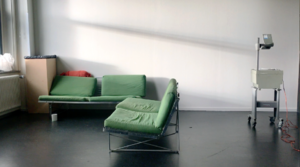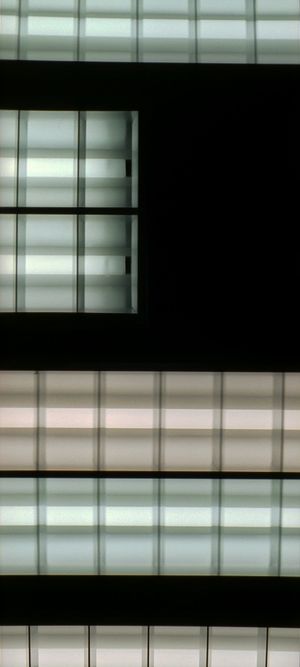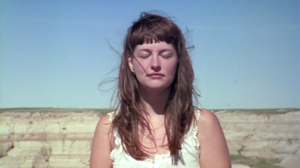●三三三ヽ(`Д´)ノ: Difference between revisions
No edit summary |
No edit summary |
||
| Line 1: | Line 1: | ||
<span style="background-color:black;"><span style="color:white;"><big> TEST ________</big> | <span style="background-color:black;"><span style="color:white;"><big> TEST ________</big> | ||
| Line 28: | Line 29: | ||
<span style="background-color:black;"><span style="color:white;">2. Hollis Frampton, Lemon | <span style="background-color:black;"><span style="color:white;">2. Hollis Frampton, Lemon | ||
Hollis Frampton’s Lemon depicts the deceptive appearance of film images. It is a formal investigation of movie appearance on screen reminiscent of Michael Snow’s Wavelength. As the light gradually illuminates the lemon, its distinctive shape appears in a three-dimensional spatial form. But as the light recedes, the lemon loses its spatiality and takes the illusive two-dimensional flat-surface form of an illusion. Lemon is a typical structuralist film that emphasizes its formal structure. It is characteristic of Frampton’s work, which investigates the nature of film appearance and its relation to the audience’s perception. | Hollis Frampton’s Lemon depicts the deceptive appearance of film images. | ||
<br> | |||
It is a formal investigation of movie appearance on screen reminiscent of Michael Snow’s Wavelength. | |||
<br> | |||
As the light gradually illuminates the lemon, its distinctive shape appears in a three-dimensional spatial form. | |||
<br> | |||
But as the light recedes, the lemon loses its spatiality and takes the illusive two-dimensional flat-surface form of an illusion. | |||
<br> | |||
Lemon is a typical structuralist film that emphasizes its formal structure. | |||
<br> | |||
It is characteristic of Frampton’s work, which investigates the nature of film appearance and its relation to the audience’s perception. | |||
<br> | |||
<span style="background-color:black;"><span style="color:white;">3. Björn Kämmerer, LOUVER | <span style="background-color:black;"><span style="color:white;">3. Björn Kämmerer, LOUVER | ||
| Line 34: | Line 46: | ||
[[File:Louver.jpg|frameless]] | [[File:Louver.jpg|frameless]] | ||
‘What are we watching?’ is the first thing viewers of Louver might ask themselves. Connoisseurs of Kämmerer’s work are aware that we are possibly witnessing a perceptual illusion caused by the mysterious hypnotic ‘two-dimensional’ movements of a light-object. Our distracted senses are unable to determine if we are observing the ‘real thing’ or abstract patterns of ‘digital light’. Here, we might also try and seek structure, some mathematical point where the movements are conducted, so they can reveal the meaning of the image. But it soon becomes apparent that the subject is Time itself: the time that is needed for the mysterious patterns to develop their own rhythms, and then to disappear into the dark frame from which they emerge. What was once a glittering screen of light grids now appears to us as a one- dimensional dark universe of the unknown. | ‘What are we watching?’ is the first thing viewers of Louver might ask themselves. | ||
<br> | |||
Connoisseurs of Kämmerer’s work are aware that we are possibly witnessing a perceptual illusion caused by the mysterious hypnotic ‘two-dimensional’ movements of a light-object. | |||
<br> | |||
Our distracted senses are unable to determine if we are observing the ‘real thing’ or abstract patterns of ‘digital light’. | |||
<br> | |||
Here, we might also try and seek structure, some mathematical point where the movements are conducted, so they can reveal the meaning of the image. | |||
<br> | |||
But it soon becomes apparent that the subject is Time itself: the time that is needed for the mysterious patterns to develop their own rhythms, and then to disappear into the dark frame from which they emerge. | |||
<br> | |||
What was once a glittering screen of light grids now appears to us as a one- dimensional dark universe of the unknown. | |||
<span style="background-color:black;"><span style="color:white;">4. Ben Russell, TRYPPS #7 | <span style="background-color:black;"><span style="color:white;">4. Ben Russell, TRYPPS #7 | ||
| Line 40: | Line 62: | ||
[[File:Ben russel.png|frameless]] | [[File:Ben russel.png|frameless]] | ||
"TRYPPS #7 (BADLANDS) charts, through an intimate long-take, a young woman's LSD trip in the Badlands National Park before descending into a psychedelic, formal abstraction of the expansive desert landscape. Concerned with notions of the romantic sublime, phenomenological experience, and secular spiritualism, the work continues Russell's unique investigation into the possibilities of cinema as a site for transcendence." | "TRYPPS #7 (BADLANDS) charts, through an intimate long-take, a young woman's LSD trip in the Badlands National Park before descending into a psychedelic, | ||
<br> | |||
formal abstraction of the expansive desert landscape. Concerned with notions of the romantic sublime, phenomenological experience, and secular spiritualism, | |||
<br> | |||
the work continues Russell's unique investigation into the possibilities of cinema as a site for transcendence." | |||
<br> | |||
Revision as of 18:07, 7 November 2017
TEST ________
The light
DAY BY DAY BY DAY BY DAY ________
1. Ulises Carrion
<To be or not to be >
<A book >
2. Hollis Frampton, Lemon
Hollis Frampton’s Lemon depicts the deceptive appearance of film images.
It is a formal investigation of movie appearance on screen reminiscent of Michael Snow’s Wavelength.
As the light gradually illuminates the lemon, its distinctive shape appears in a three-dimensional spatial form.
But as the light recedes, the lemon loses its spatiality and takes the illusive two-dimensional flat-surface form of an illusion.
Lemon is a typical structuralist film that emphasizes its formal structure.
It is characteristic of Frampton’s work, which investigates the nature of film appearance and its relation to the audience’s perception.
3. Björn Kämmerer, LOUVER
‘What are we watching?’ is the first thing viewers of Louver might ask themselves.
Connoisseurs of Kämmerer’s work are aware that we are possibly witnessing a perceptual illusion caused by the mysterious hypnotic ‘two-dimensional’ movements of a light-object.
Our distracted senses are unable to determine if we are observing the ‘real thing’ or abstract patterns of ‘digital light’.
Here, we might also try and seek structure, some mathematical point where the movements are conducted, so they can reveal the meaning of the image.
But it soon becomes apparent that the subject is Time itself: the time that is needed for the mysterious patterns to develop their own rhythms, and then to disappear into the dark frame from which they emerge.
What was once a glittering screen of light grids now appears to us as a one- dimensional dark universe of the unknown.
4. Ben Russell, TRYPPS #7
"TRYPPS #7 (BADLANDS) charts, through an intimate long-take, a young woman's LSD trip in the Badlands National Park before descending into a psychedelic,
formal abstraction of the expansive desert landscape. Concerned with notions of the romantic sublime, phenomenological experience, and secular spiritualism,
the work continues Russell's unique investigation into the possibilities of cinema as a site for transcendence."




